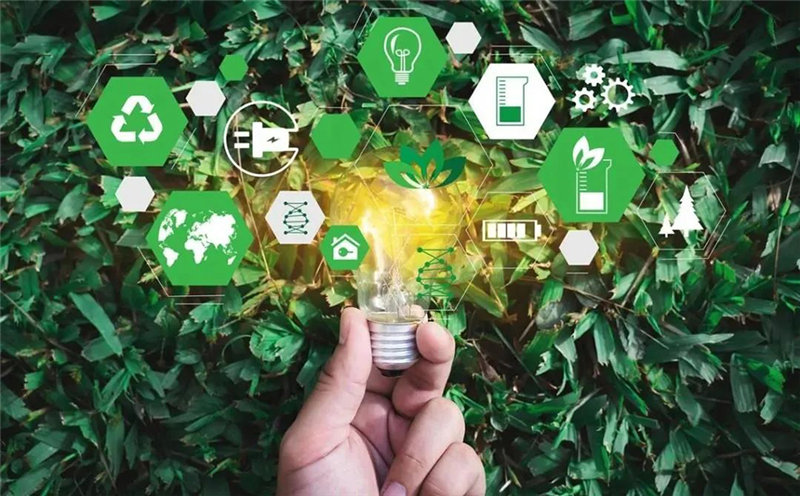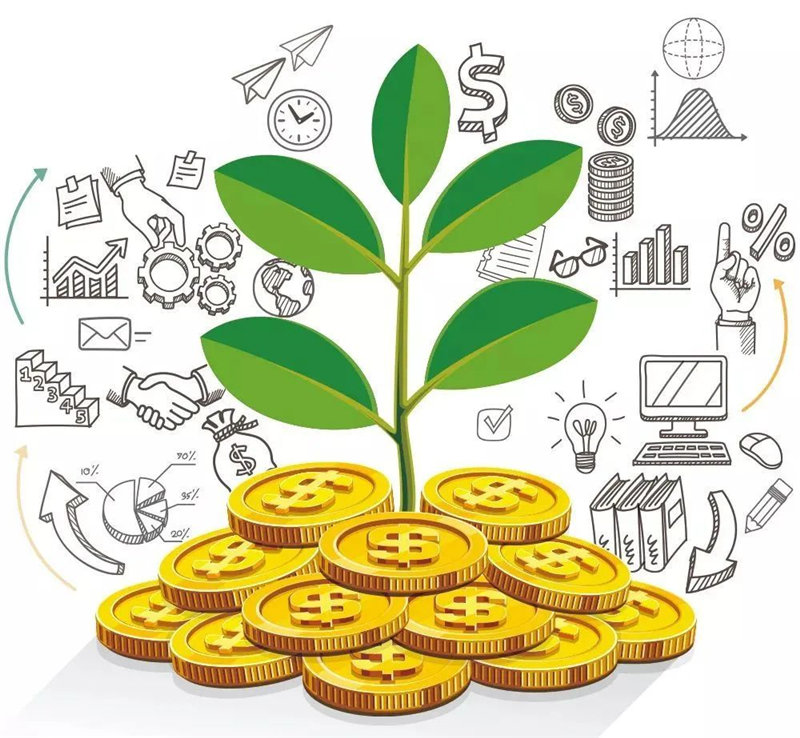Hot Sharing | Green Finance under the
Oct 21, 2021In order to cope with the long-term task of climate change, the world economy has been vigorously advocating a "green recovery" after the epidemic. With China’s long-term goal of carbon neutrality by 2060, the entire socio-economic system, including China’s financial system, has faced tremendous challenges. China’s green finance has developed rapidly and green credit has grown steadily.
Green finance refers to economic activities that support environmental improvement, response to climate change, and resource conservation and efficient use, that is, investment and financing, project operations, risk management, etc. for projects in the fields of environmental protection, energy conservation, clean energy, green transportation, and green buildings. Financial services.

Green finance is an important part of China's "dual carbon" target policy framework. In coordination with industrial policies, consumption policies, tax policies, and carbon market transactions, green finance plays an important role in promoting the realization of the "dual carbon" target.
As China put forward the long-term goal of peaking carbon by 2030 and carbon neutral by 2060 at the 75th United Nations General Assembly, the energy and environmental transformation should be combined with national conditions and strive to explore a path of green finance with Chinese characteristics. In the short term, the current novel coronavirus crisis provides governments with a key opportunity to implement green recovery plans. They can formulate new growth strategies to promote economic transformation, so as to solve current structural problems while enhancing the resilience of the economy to future shocks; In the long run, the sustainable development goals of the economy under the new normal are facing increasing resource and environmental pressures. Vigorously developing green industries and promoting the transformation of energy structure are urgently needed to achieve China's carbon neutrality goals.
China's green finance market mainly includes the green credit market, green bond market, green fund market, green insurance market and environmental trading market. The current green credit market and green bond market are relatively active green financial markets in China, and the green credit market is developing rapidly.
From a national perspective, China has started the construction of a “top-down” green credit policy system since 2007, and has initially established a green financial system framework with abundant policy tools, reasonable policy incentives, and sophisticated evaluation mechanisms. Since 2008, six banks, including Industrial Bank, Bank of Jiangsu and Bank of Huzhou, have successively adopted the "Equator Principles" as a corporate lending standard, in line with international green credit standards. Prior to this, the central government’s willingness to develop green finance and the local government’s willingness to prioritize the development of regional economies and financial institutions’ pursuit of high-profit projects with short capital recovery cycles were prominent. This may be due to the fact that the construction of the green financial market has remained stagnant. An important reason for this.

In July 2018, the People's Bank of China formally incorporated green credit performance into the public management system of financial institutions, and incorporated the results of green credit performance evaluation into the macro-prudential evaluation system, effectively increasing the importance and promotion of green credit projects by banking financial institutions The enthusiasm of green credit business has further encouraged the development of green credit.
From a local perspective, the relevant green economy authorities of governments at all levels adopt a variety of incentive policies to guide credit funds into green projects. In some pilot regions and other provinces, municipalities and autonomous regions, some monetary policy tools have been tried to encourage green credit, including bank refinancing, innovative capital market tools, innovative green project guarantees, the establishment of green funds and green project databases, etc. As of the end of March 2018, data from the People's Bank of China showed that the total balance of green loans in the pilot zone had exceeded 260 billion yuan, an increase of 13% from the beginning of the pilot zone.
As the core product of China's green banking system, green credit is the foundation of China's green financial system. As a long-term and low-cost source of funds for green loans and green investments, in recent years, the green development and innovation of credit products have made outstanding contributions to the improvement of the financial system with Chinese characteristics.
The central bank recently released a statistical report on the loan direction of financial institutions in the second quarter of 2021, showing that at the end of the second quarter, the balance of RMB loans of financial institutions was 185.5 trillion yuan, an increase of 12.3% year-on-year; in the first half of the year, an increase of 12.76 trillion yuan, an increase of 6,677 year-on-year 100 million yuan. Loan investment increased, the growth of medium and long-term loans to enterprises and institutions accelerated, the growth rate of medium and long-term loans to industry continued to increase, loans in the inclusive finance sector maintained rapid growth, the growth rate of green loans accelerated, the growth rate of agricultural loans fell slightly, and the growth rate of real estate loans Continued decline, and the growth of household operating loans accelerated.
In terms of green loans, at the end of the second quarter, the balance of domestic and foreign currency green loans was 13.92 trillion yuan, a year-on-year increase of 26.5%, which was 1.9 percentage points higher than the end of the first quarter, and was 14.6% higher than the growth rate of various loans. It increased by 1.87 trillion yuan in the first half of the year. . Among them, loans invested in projects with direct and indirect carbon emission reduction benefits were 6.79 trillion yuan and 2.58 trillion yuan respectively, accounting for 67.3% of green loans in total.
In addition, the six major banks have made comprehensive use of financial instruments such as credit, bonds, leases, and trusts to actively explore innovative products for green finance. In the first half of the year, various banks developed new green financial products and services, some of which have already formed a scale in the market. Among them, the green loan balances of the four state-owned banks of Industry, Agriculture, Construction, and China all exceeded one trillion yuan. The total scale of green loans of the six state-owned banks in the first half of this year has exceeded 7 trillion yuan.
Of course, meeting financing needs also faces common problems. Experts such as Shi Yingzhe, associate professor of the School of Finance of the Central University of Finance and Economics, believe that to achieve the "dual carbon" goal, China's total green financing demand is about 150 trillion yuan. As an important part of green financing, green credit accounts for about 90% of the total amount of green financing. There is huge room for future demand for green credit. During the survey, the interviewees said that green credit still faces common problems in meeting the demand for green financing, mainly including the incomplete green market system; the disclosure of corporate environmental information needs to be strengthened; and the incomplete incentive and evaluation mechanism.
Facing the common problems in the development of green credit, China has been actively exploring and seeking solutions. For example, in the establishment of a unified national environmental rights trading market, on July 16 this year, the national carbon emissions trading market was officially launched, marking that the financial attributes of corporate carbon emission rights have become clearer and will help financial institutions to carry out carbon emission rights pledges. For financing business, relevant companies can apply for loan support with carbon emission allowances.
Respondents suggested that in order to further promote the development of green credit to support green projects and industries, we can continue to focus on improving the green financial standard system and strengthening the green financial incentive mechanism.
——Ecological resources must be found in price. The Jiangxi Branch of the Agricultural Bank of China believes that ecological resources such as mountains, water, forests, fields, lakes, and grasses must have fair value in the market before financial institutions can provide credit support and realize the conversion of "ecological resources" into "value assets." In this regard, on the basis of pilot projects in Fuzhou, Chongyi County and other places, Jiangxi has gradually formed local standards for the evaluation and accounting of ecological products. Calculate the value. Experts from the Regional Financial Reform (Green Finance) Professional Committee of the Jiangxi Institute of Finance said that on the basis of finding prices, it is necessary to establish a trading market within a certain area to make green assets liquid.

-Green development must be profitable. Financial institutions believe that companies are the main players in the practice of green development. At present, some companies are concerned about the cost input required for green development transformation. It is recommended that green industries and companies adopt policies such as subsidies, discounts, and tax reductions to encourage companies to improve environmental protection. Awareness and initiative to improve environmental protection facilities. Relevant departments can set up green financial risk compensation funds, build environmental information disclosure platforms, and adopt various methods such as targeted RRR cuts and tax reductions to encourage and assist financial institutions to invest more funds in green industries.